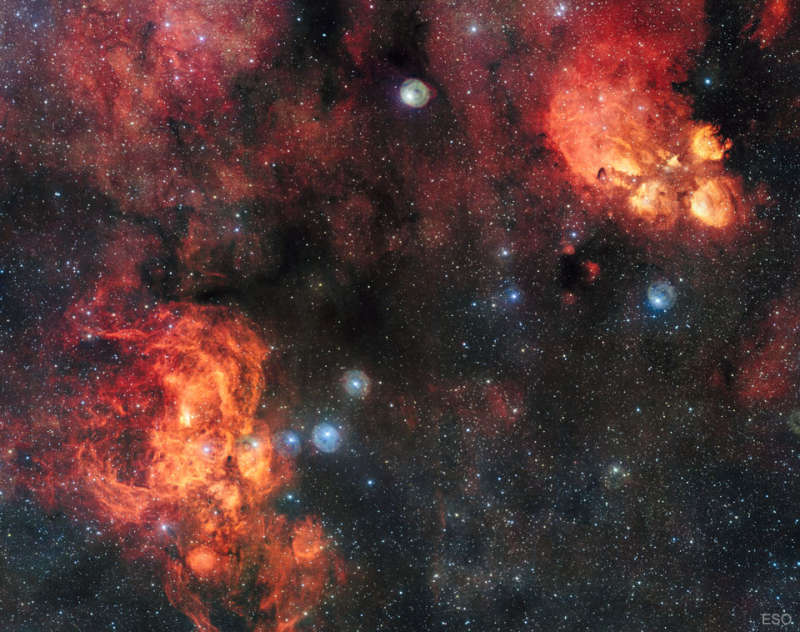
|
Credit & Copyright: ESO,
VLT Survey Telescope
Explanation:
Why is the Lobster Nebula forming some of the most massive stars known?
No one is yet sure.
Near the more obvious
Cat's Paw nebula on the upper right,
the
Lobster Nebula, on the lower left and cataloged as NGC 6357, houses the open
star cluster
Pismis 24, home to these tremendously bright and blue
stars.
The overall red glow near the inner star forming region results from the
emission of
ionized
hydrogen gas.
The surrounding nebula,
featured here,
holds a complex tapestry of gas,
dark dust, stars still forming, and newly born stars.
The intricate patterns are caused by complex interactions between
interstellar
winds,
radiation pressures,
magnetic fields, and
gravity.
The full
zoomable version
of this image contains about two billion pixels,
making it one of the largest space images ever released.
NGC 6357 spans about 400 light years and lies about 8,000
light years away toward the constellation of the
Scorpion.
|
January February March April May June July August September October November December |
| ||||||||||||||||||||||||||||||||||||||||||||||||
NASA Web Site Statements, Warnings, and Disclaimers
NASA Official: Jay Norris. Specific rights apply.
A service of: LHEA at NASA / GSFC
& Michigan Tech. U.
Based on Astronomy Picture
Of the Day
Publications with keywords: emission nebula - star formation
Publications with words: emission nebula - star formation
See also:
- APOD: 2025 December 28 Á NGC 1898: Globular Cluster in the Large Magellanic Cloud
- NGC 253: Dusty Island Universe
- APOD: 2025 October 21 Á IC 1805: The Heart Nebula
- Young Suns of NGC 7129
- APOD: 2025 December 17 Á W5: The Soul Nebula
- APOD: 2025 December 9 Á The Heart of the Soul Nebula
- APOD: 2025 September 19 Á The NGC 6914 Complex
